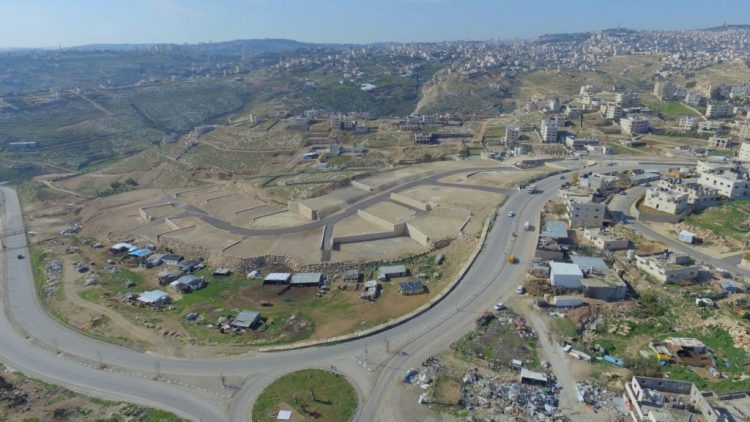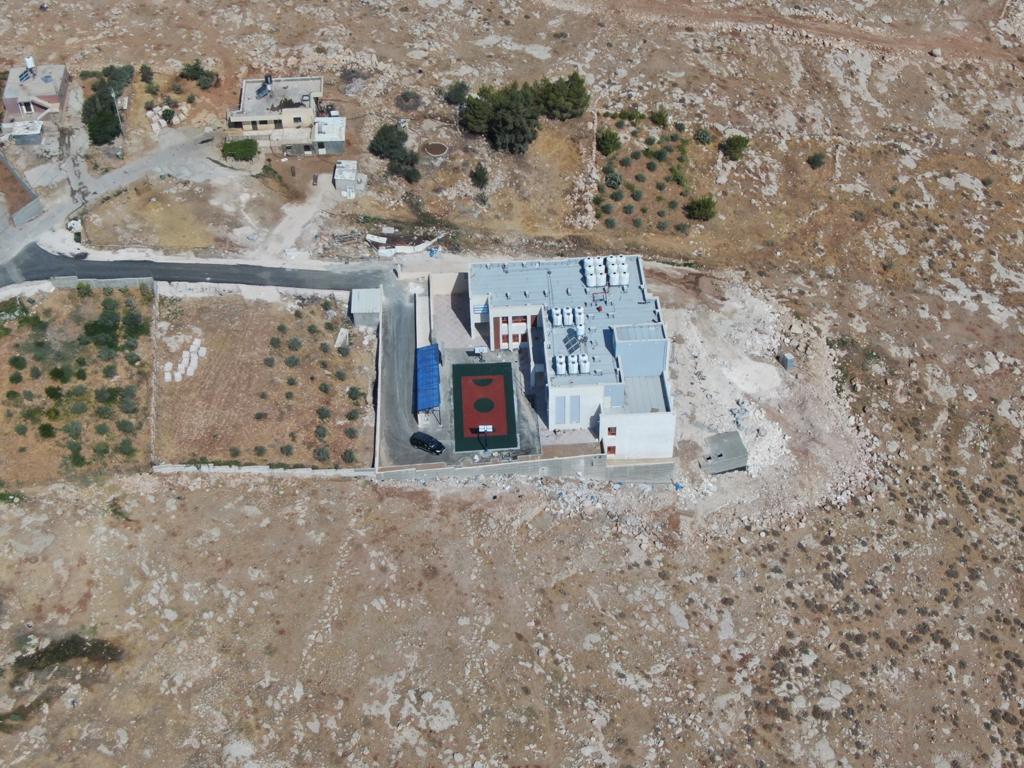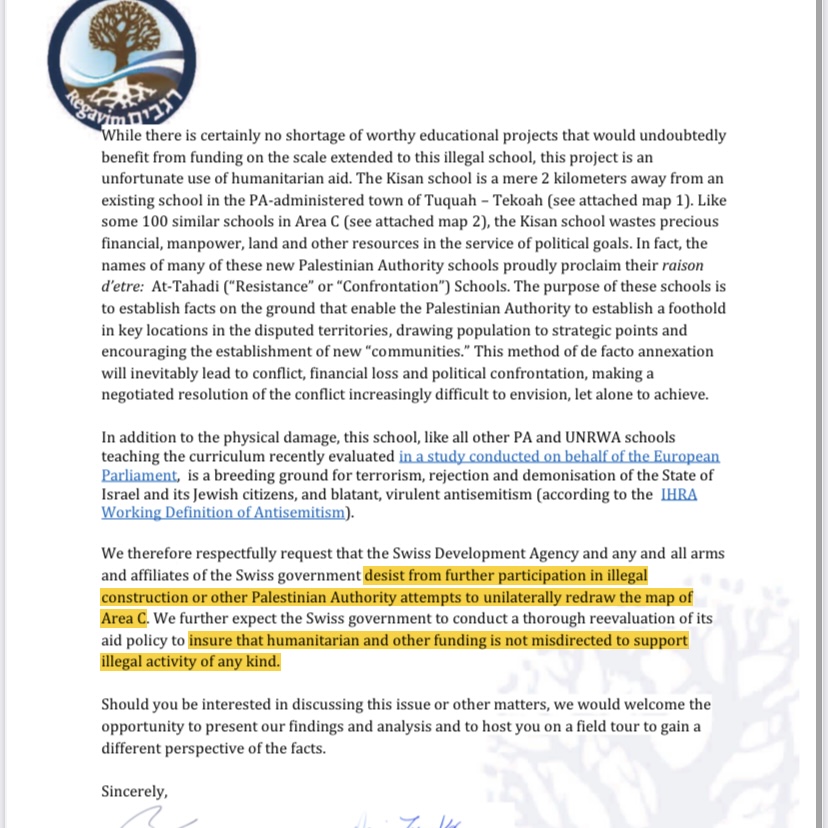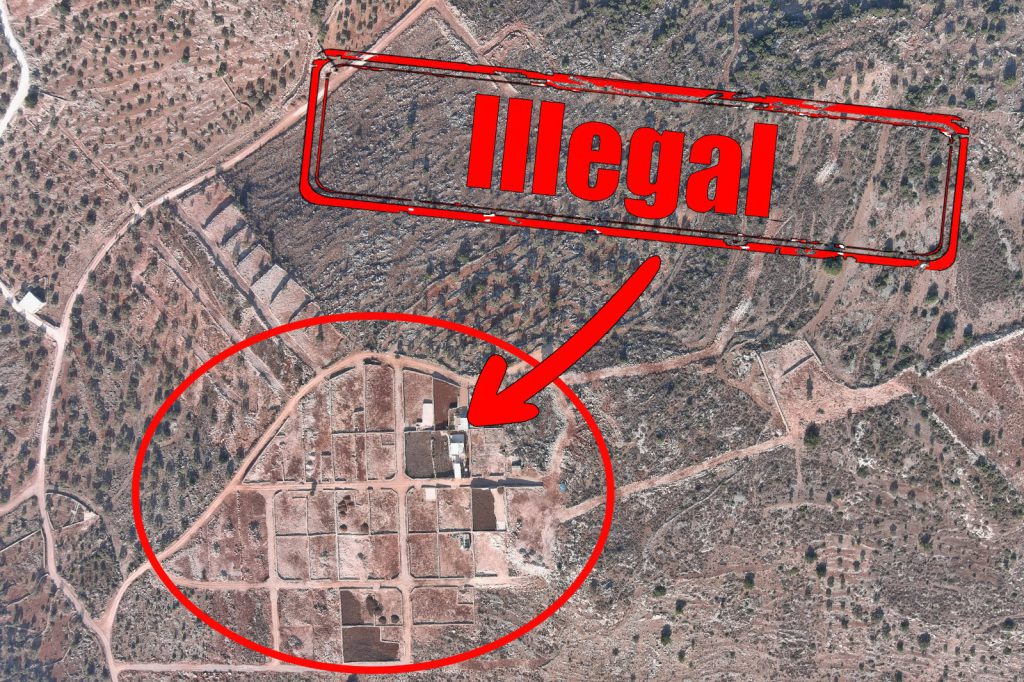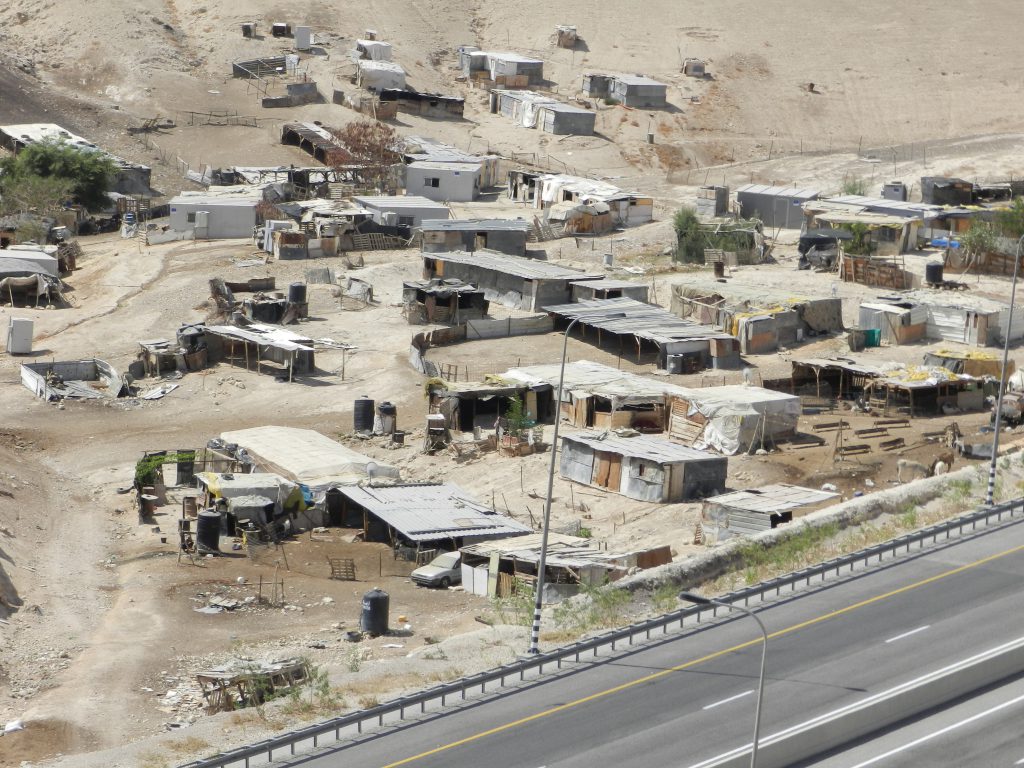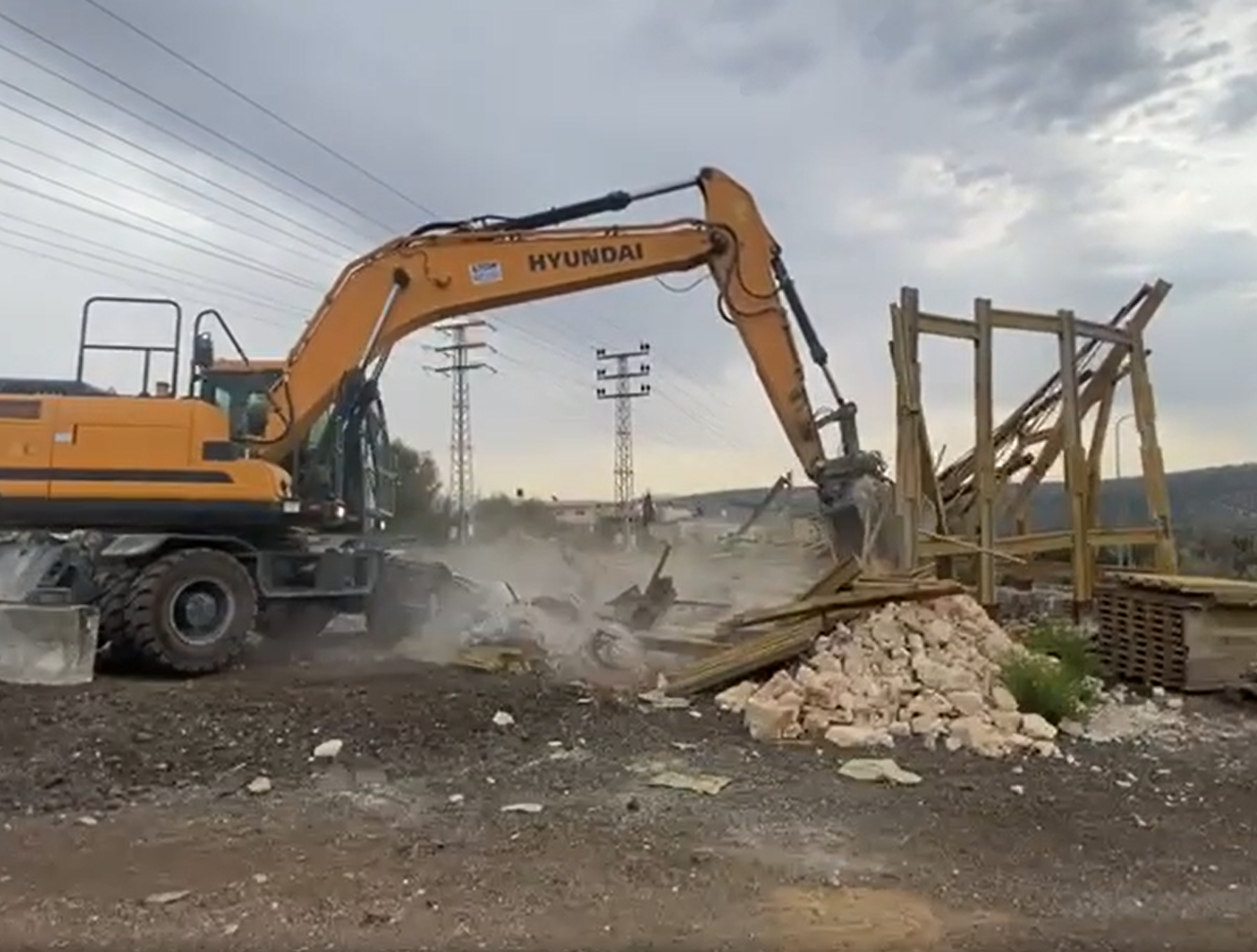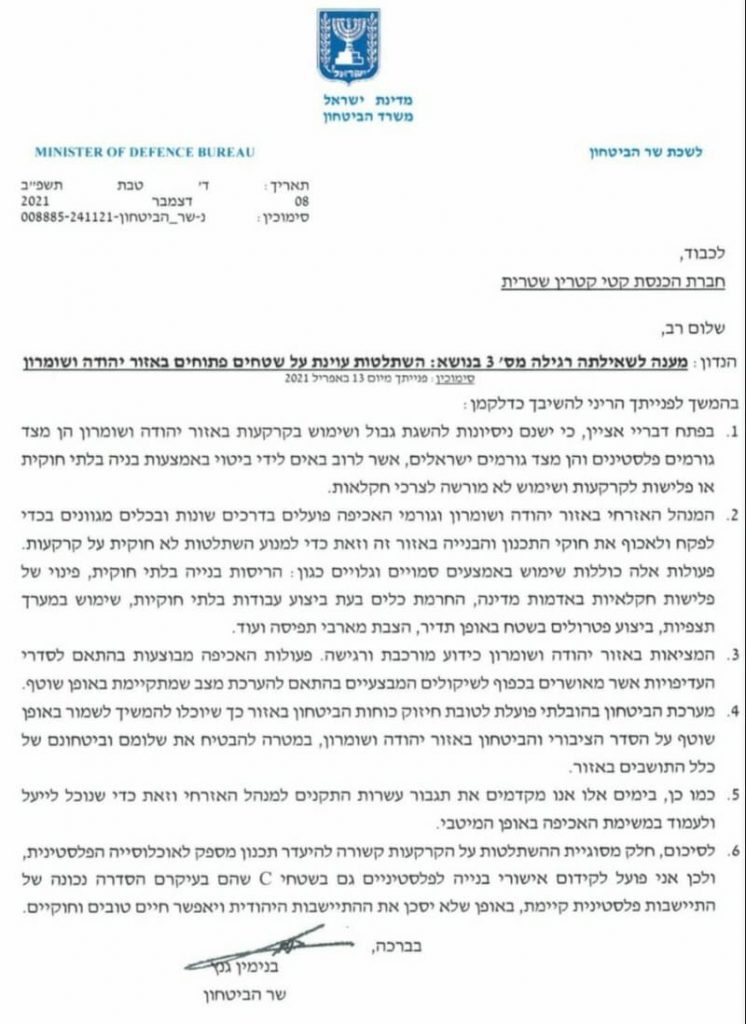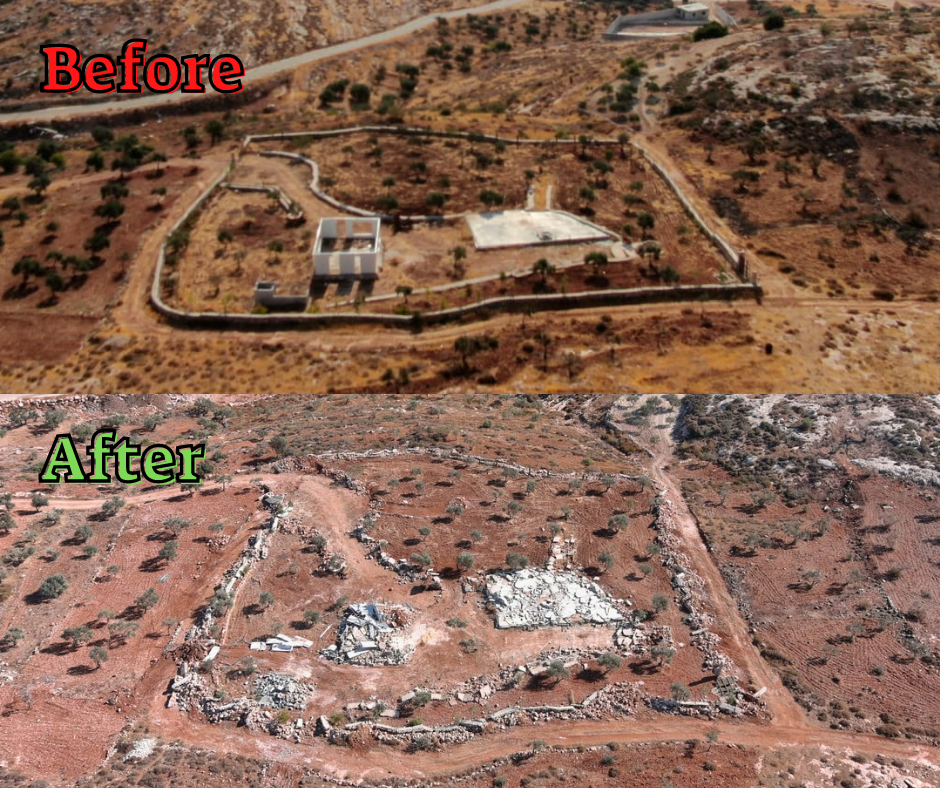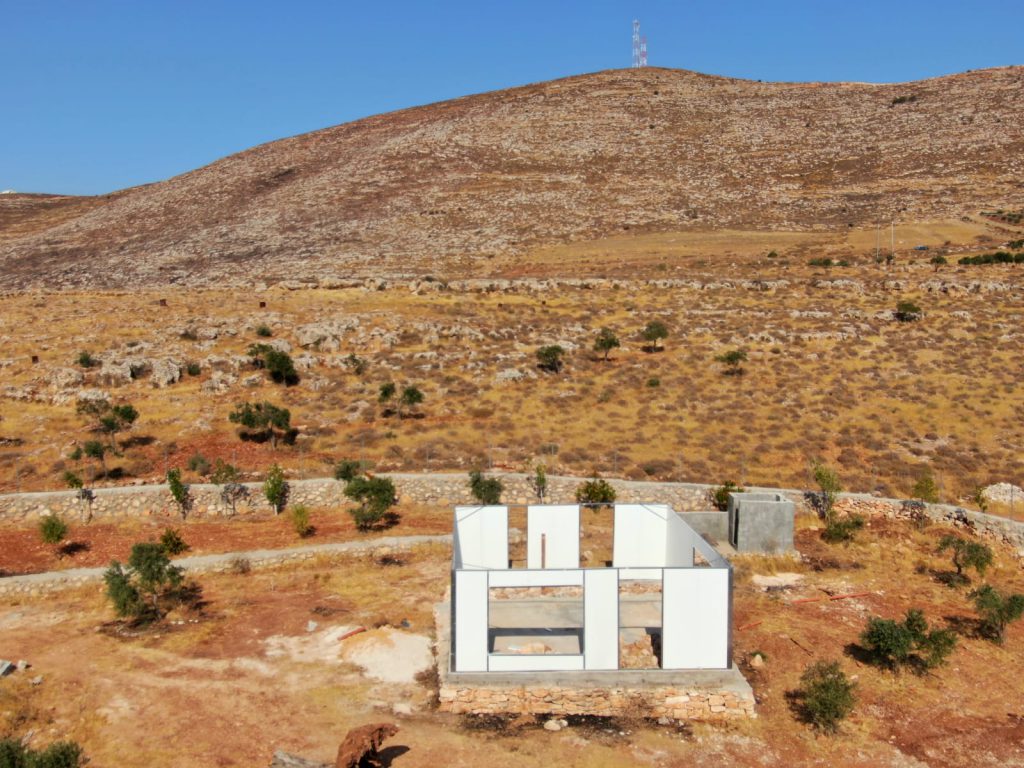
Regavim first petitioned the High Court of Justice over a decade ago for the evacuation of Khan al Ahmar, the illegal squatters’ camp encroaching on Route 1 and the Jewish community of Kfar Adumim.
This evening, Amit Segal reported on Channel 12 News that the Bennett-Lapid government intends to relocate the squatters a mere 300 meters (330 yards) away from their current location.
This hare-brained scheme, hatched by the Ministry of Defense, will turn the Palestinian Authority’s flagship outpost in Judea and Samaria into a permanent, recognized Palestinian settlement.
The PA targeted this point on the map precisely because of its critical strategic value as the link between Bethlehem, Ramallah and Jericho – an area where there is no Palestinian Arab presence. Enabling the takeover and de facto annexation of this strategic location will be a fiasco for the security and strategic integrity of the State of Israel.
The Israeli government invested millions, preparing an alternative location for relocation of Khan al Ahmar on Israeli state land in Jahalin West, but the relocation of the squatters has been stalled solely due to European pressure.
It is inconceivable that the very same members of this government who repeatedly attacked Netanyahu for his failure to evacuate the squatters of Khan al Ahmar are now responsible for this bizarre, pathetic alternative – one that is far worse in every way.
The planned relocation will do little to improve the lives of the squatters, but it will set a dangerous precedent of state-sanctioned annexation for the dozens of illegal squatters’ camps throughout the region that were established according to the Khan al Ahmar model.
